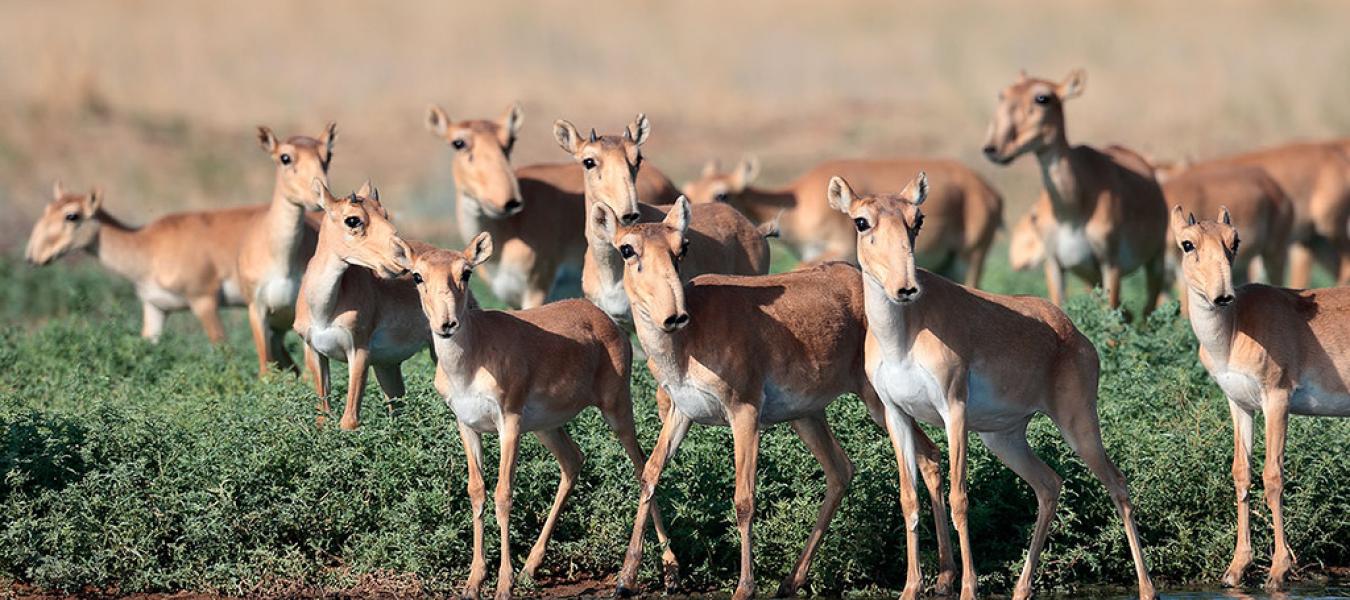
Fauna and Flora International joins the Altyn Dala Conservation Initiative
Liesje Birchenough, FFI, liesje.birchenough@fauna-flora.org
Given the scale and nature of the threat to the saiga, with the 2015 mass mortality event and ongoing poaching, the participants at the saiga conservation planning workshop held in Astana in April this year agreed to take a more integrated and holistic approach to address conservation of the species at the meta-population level across Kazakhstan. We urgently need to build build the resilience of all three Kazakh saiga populations and strong collaboration across all saiga landscapes is necessary to do this. The Frankfurt Zoological Society, the Royal Society for the Protection of Birds, the Association for Conservation of Biodiversity in Kazakhstan, and the Kazakhstan Government already work together on the Altyn Dala (Golden Steppe) Conservation Initiative (ADCI) which focuses on the conservation of the Betpak Dala landscape in Central Kazakhstan.
This initiative is delivered through ACBK and has been the most successful conservation intervention for increasing the number of saiga, until the mass die off event in 2015. The ADCI has many parallels to Fauna & Flora International's (FFI) Ustyurt initiative with similar challenges, approaches and partners. We have been exploring options for closer collaboration between the two initiatives to ensure that our activities are more effective and mutually beneficial across landscapes. As a result, during an ADCI steering group meeting, FFI was invited to become a core partner of the ADCI and the Ustyurt landscape was made an additional focal area. It was also agreed to expand the focus of the Initiative to include the Ural landscape, thereby extending the 'Golden Steppe' Initiative to the three Kazakh saiga landscapes (120 million hectares) and their saiga populations.
All the ADCI partners hope that this collaboration will enable better and more effective saiga conservation in Kazakhstan.
